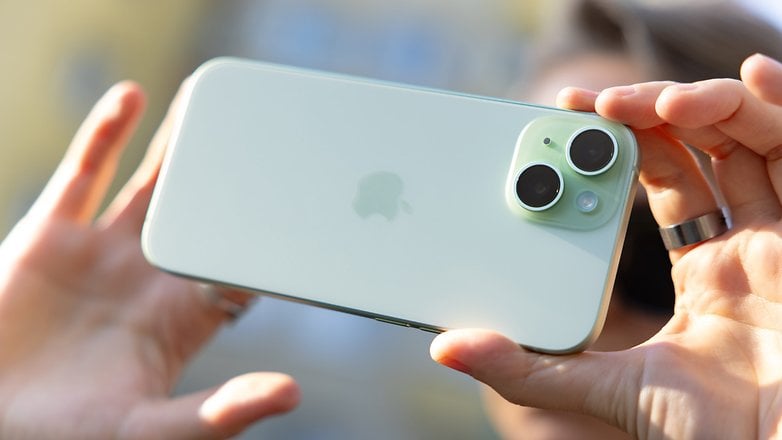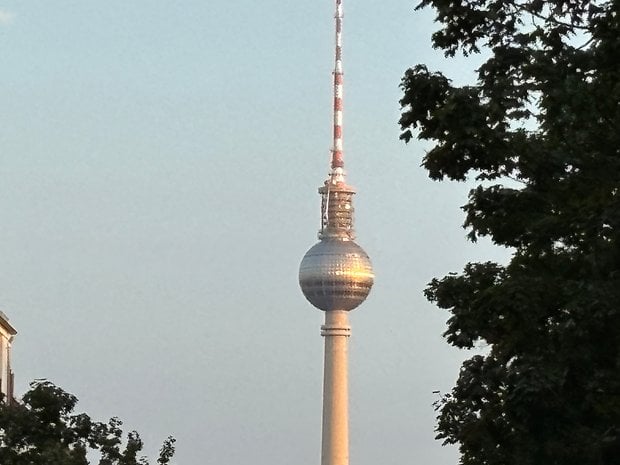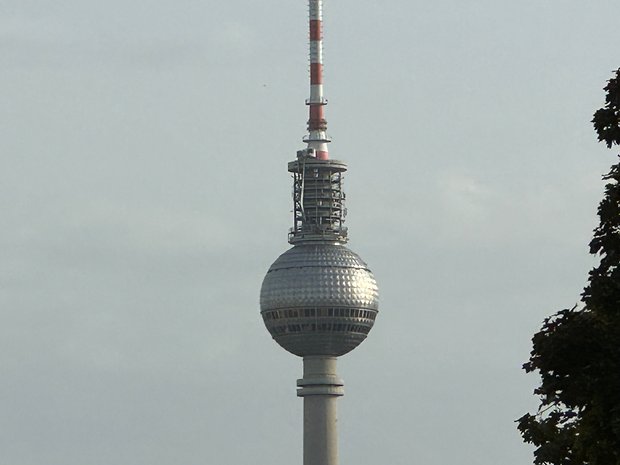iPhone 15 (Plus) vs. iPhone 15 Pro (Max): Which Apple Flagship is Right for You


iPhone 15, iPhone 15 Plus, iPhone 15 Pro, or iPhone 15 Pro Max, which top-of-the-line Apple smartphone should you choose in 2024? nextpit offers a comprehensive comparison of the specifications, design, and prices of Apple's flagships to help you choose the one that's right for you.
nextpit was able to test all the models in Apple's iPhone 15 range. This comparison is therefore based not only on technical specifications but also on our real-life opinions based on our testing experiences. Before getting to the heart of the matter, let's take a look at the specifications:
- Also read: All highlights from the big iPhone 15 event
Apple iPhone 15: A comparison of the technical specs of all four models
Before we take a detailed look at the new models, we first take a look at the technical specs of the new Apple phones in our table:
Table of Contents:
- iPhone 15 (Plus) vs. iPhone 15 Pro (Max): Design and screen
- iPhone 15 (Plus) vs. iPhone 15 Pro (Max): SoC and performance
- iPhone 15 (Plus) vs. iPhone 15 Pro (Max): Camera module
- iPhone 15 (Plus) vs. iPhone 15 Pro (Max): Software and iOS
- iPhone 15 (Plus) vs. iPhone 15 Pro (Max): Battery life and fast charging
- iPhone 15, iPhone 15 Plus, iPhone 15 Pro, iPhone 15 Pro Max: price and availability
- Conclusion: Which iPhone 15 model should I choose?
iPhone 15 (Plus) vs. iPhone 15 Pro (Max): Design and display
iPhone 15 and iPhone 15 Plus
The iPhone 15 and 15 Plus look only minimally different from their predecessors. Apple still relies on an aluminum frame and the dimensions and weight have also only changed insignificantly. There is colored glass on the back and a Ceramic Shield front.

Of course, the USB Type-C port is new, which Apple introduced for all models. Say goodbye to the Lightning port on the iPhone. The iPhone 15 and iPhone 15 Plus are available in pink, yellow, green, blue, and black. We also have to say goodbye to a rather unloved feature: The previous notch in the center at the top of the display. The standard models now also finally get the flexible notch called Dynamic Island, which was still reserved for the Pro models in 2022.
Apple explains that this pill-shaped notch has become even more versatile. Now you can also display the gate for your flight, or see at a glance how things stand at your favorite club.

Both the iPhone 15 and the iPhone 15 Plus rely on a "Super Retina XDR" display—one with a size of 6.1 inches for the basic version and the other with 6.7 inches for the Plus variant. The display is brighter: Apple quotes a brightness of 1,600 nits, the peak in the sun is even 2,000 nits—twice as bright as in the iPhone 14.
iPhone 15 Pro and iPhone 15 Pro Max
The design of the iPhone 15 Pro and the iPhone 15 Pro Max has changed a bit more. Of course, this also applies to the Lightning connector, which has been replaced by USB Type-C, but also to the material used: While it was still stainless steel last year, Apple now relies on titanium this year, which makes the devices both more robust and lighter.

Speaking of materials, Apple is focusing on more sustainability than ever before for both the Pro devices and the basic models. Apple uses more recycled materials—for example, only recycled cobalt is used in the batteries. The devices with titanium frames will be available in four colors: White Titanium, Black Titanium, Blue Titanium, and Nature Titanium. The Pro iPhones also have the Ceramic Shield front, but Apple uses a textured matte glass design for the back.
The display edges have become thinner, and the corners of the front have also been rounded off further. Those who followed the rumors in the run-up have already expected this: Apple will give the Pro models its new action button on the left side of the device. The button, which replaces the mute button, not only takes over its function but can start a variety of other actions, such as triggering the camera.

The Pro models feature OLED panels, which Apple, as usual, calls the most absurd marketing terms. The "Super Retina XDR display" comes with a resolution of 2556 x 1179 px on the 15 Pro and 2796 x 1290 px on the 15 Pro Max—unchanged from last year. The adaptive ProMotion mode with LTPO 2.0 technology, allows a refresh rate that ranges from 1 to 120 Hz, but we already know that from last year.
iPhone 15 (Plus) vs. iPhone 15 Pro (Max): SoC and performance
iPhone 15 and iPhone 15 Plus
Although the SoCs of the iPhone 15 (Plus) and iPhone 15 Pro (Max) are different, as they were last year, there's no need to worry that the iPhone 15 and iPhone 15 Plus will experience performance problems. Both models will be equipped with the A16 Bionic SoCs that powered last year's Pro models.
In practice, in the benchmarks to which we subjected the iPhone 15 and 15 Plus, the smartphones achieved results close to those of last year's Pro versions. In other words, we'd expect little difference in performance between the two generations. Here are the benchmark results:
| iPhone 15 Plus (Apple A16 Bionic) |
iPhone 15 (Apple A16 Bionic) |
|
|---|---|---|
| 3DMark Wild Life Stress Test |
|
|
| 3DMark Wild Life Extreme Stress Test |
|
|
| 3DMark Solar Bay Stress Test |
|
|
| Geekbench |
|
|
Although it's already a year old, the A16 Bionic still delivers competitive performance in games and everyday tasks. Animations, scrolling, application transitions, media effects applications, and basic photo editing all work as fast (if not faster) than any other smartphone on the market, with the exception of the iPhone 15 Pro.
You will, however, have to contend with a performance limitation that traditionally affects a small proportion of users, namely USB 2.0 transfer speeds from the USB C port. Another area in which the basic models lag behind the Pro models is native ray tracing support.
iPhone 15 Pro and iPhone 15 Pro Max
With the A17 Pro, Apple once again takes a step forward in the performance of its Pro models. This is not a simple SoC update, but a major upgrade. Compared with the A16 Bionic, Apple promises up to 10% more CPU performance, and even 20% more GPU performance.
The iPhone 15 Pro uses hardware-accelerated ray tracing for the first time, which is up to four times faster than software ray tracing and offers smoother graphics and realistic light simulations. The following table shows the benchmark results:
| iPhone 15 Pro (Apple A17 Pro Bionic) |
iPhone 15 Pro Max (Apple A17 Pro Bionic) |
|
|---|---|---|
| 3DMark Wild Life Stress Test |
|
|
| 3DMark Wild Life Extreme Stress Test |
|
|
| Geekbench 6 |
|
|
In practice, it's not so easy to identify the advantages in terms of power, especially compared to its predecessor. Most everyday applications run smoothly and quickly, and there are virtually no lags - in other words, exactly as on the iPhone 14 Pro.
We'll have to wait a few more months before the CPU and GPU are really put to the test. The big AAA games, which should push the A17 Pro to its limits with raytracing and the like, are still not available today.
Current mobile games obviously run without a hitch: all 3D games run at a constant 60 FPS, and some 2D games can go up to 120 FPS. We haven't experienced any slowdowns or overheating problems.
Overheating was a big problem in the first online tests. But Apple seems to have rectified this since then. In fact, our iPhone 15 Pro Max heated up more when charging than during an hour-long gaming session.
iPhone 15 (Plus) vs. iPhone 15 Pro (Max): Camera module
iPhone 15 and iPhone 15 Plus
Apple once again differentiates between the photo modules of its two ranges. For the iPhone 15 and iPhone 15 Plus, the manufacturer has opted for a main lens with a 48 MP sensor and f1.6 aperture. For the ultra-wide angle, we're sticking with the usual 12 MP and f2.4 aperture.
You'll benefit from a versatile dual photo module, true-to-life photo quality and an enhanced, modifiable portrait mode. Apple exploits the high resolution of the main lens to integrate a zoom function into the sensor, enabling you to have virtually three different focal lengths.

Photos are vivid, detailed, and balanced, whatever the lighting conditions. The 0.5x, 1x, and 2x zoom levels of the iPhone 15 and 15 Plus make perfect sense, offering a versatile photographic experience.
The selfie lens excels in a variety of lighting conditions, thanks in particular to the enhanced Portrait mode, producing sharper, more vivid photos with outstanding results in low light.
You can see for yourself by looking at the photos in the gallery below:
Photos from the iPhone 15:
Photos from the iPhone 15 Plus:
iPhone 15 Pro and iPhone 15 Pro Max
On paper, the iPhone 15 Pro and 15 Pro Max camera modules don't look all that different. In addition to the 48 MP lens, there's still a 12 MP ultra-wide-angle lens. The telephoto lens, however, has an f2.8 aperture. Things only get really interesting with the iPhone 15 Pro Max, to which Apple has added a sensor with a 5x optical zoom and a focal length of 120 mm.
The iPhone 15 Pro takes magnificent photos, with the new 24 MP resolution making it possible to reproduce the finest details. Images are pleasantly sharp, without being artificially blurred. Contrasts are strong, but don't offer an exaggerated HDR look either. Portrait shots are successful, but aren't always perfect when it comes to background clearance.

It does well for photos in artificial light and at night. The white balance fairly reliably reflects actual lighting conditions in artificial and mixed light and, as a result, color reproduction is also good in difficult conditions. It's only when the light is very low that colors appear increasingly desaturated and dull, just like on a smartphone.
The iPhone 15 Pro Max offers the same photo quality, with the added benefit of a x5 periscopic telephoto lens. I invite you to read our photo comparison between the iPhone 15 Pro and iPhone 15 Pro Max to find out more. The zoom is very effective and there is no significant loss of detail up to x10 magnification.
Here again, you can judge for yourself by looking at the photos in our galleries:
Photos from the iPhone 15 Pro
Photos from the iPhone 15 Pro Max
iPhone 15 (Plus) vs. iPhone 15 Pro (Max): Software and iOS
Fittingly, Apple launched the iPhone 15 (Plus) and iPhone 15 Pro (Max) with iOS 17. Fortunately, Apple doesn't differentiate its iPhone 15 and 15 Pro in terms of software experience.
The new version of Apple's mobile OS has brought features like NameDrop, Stand By, Check In and many more. I invite you to read our complete guide to iOS 17 features to find out more.
iPhone 15 (Plus) vs. iPhone 15 Pro (Max): Battery life and fast charging
The iPhone 15 and iPhone 15 Plus both have larger batteries than their predecessors, so the already good battery life could probably be extended even further in our test. In both cases, both wireless and reverse wireless charging are supported. However, fast means 20 W, and Apple has not changed anything in this respect with the new devices.

Charging is now via USB-Type-C for the first time. The iPhone 15 offers a full day's battery life with average use. The iPhone 15 Plus has excellent battery life, easily lasting a full day of intensive use and more than two days of moderate use.
As for the Pro models, the iPhone 15 Pro can last all day on a single charge. Autonomy only drops significantly with really intensive use. With the iPhone 15 Pro Max, we managed at least a day and a half.
Prices and availability of iPhone 15, iPhone 15 Plus, iPhone 15 Pro, iPhone 15 Pro Max
The iPhone 15, 15 Plus, 15 Pro and 15 Pro Max have been on sale since September 22. Below you'll find the prices of the different iPhone 15 models.
Be sure to read Dustin's article, which tells you where you can buy the various models of the iPhone 15 series.
| iPhone 15 | iPhone 15 Plus | iPhone 15 Pro | iPhone 15 Pro Max | |
|---|---|---|---|---|
| 128 GB | $799 | $899 | $999 | - |
| 256 GB | $899 | $999 | $1099 | $1199 |
| 512 GB | $1099 | $1199 | $1299 | $1399 |
| 1 TB | - | - | $1499 | $1599 |
Conclusion
So much for this comparison of the iPhone 15, iPhone 15 Plus, iPhone 15 Pro, and iPhone 15 Pro Max. Once again, the improvements are sometimes minimal, but the evolutions are sometimes very interesting. The A17 Pro of the Pro models is a performance beast for gamers, photo quality is top-notch and battery life is more than decent in general.
Apple has finally changed the design of the iPhone 15 and 15 Plus, with new materials and a new button on the iPhone 15 Pro and 15 Pro Max. USB Type-C is finally available on all models. In the end, the choice will really depend on what you feel is important to you. Look at the features you need, and you'll be able to choose the iPhone 15 that suits you best.
In any case, you'll have chosen a beautiful, top-of-the-range smartphone that you'll be able to keep for a very long time.
What do you think? Are there any features or design elements that particularly appeal to you? Are the prices convincing? Or do you also like the idea of sustainability? Write it down for us in the comments.
Article updated on February 2024 with our impressions on all the four models.





















































































































































































